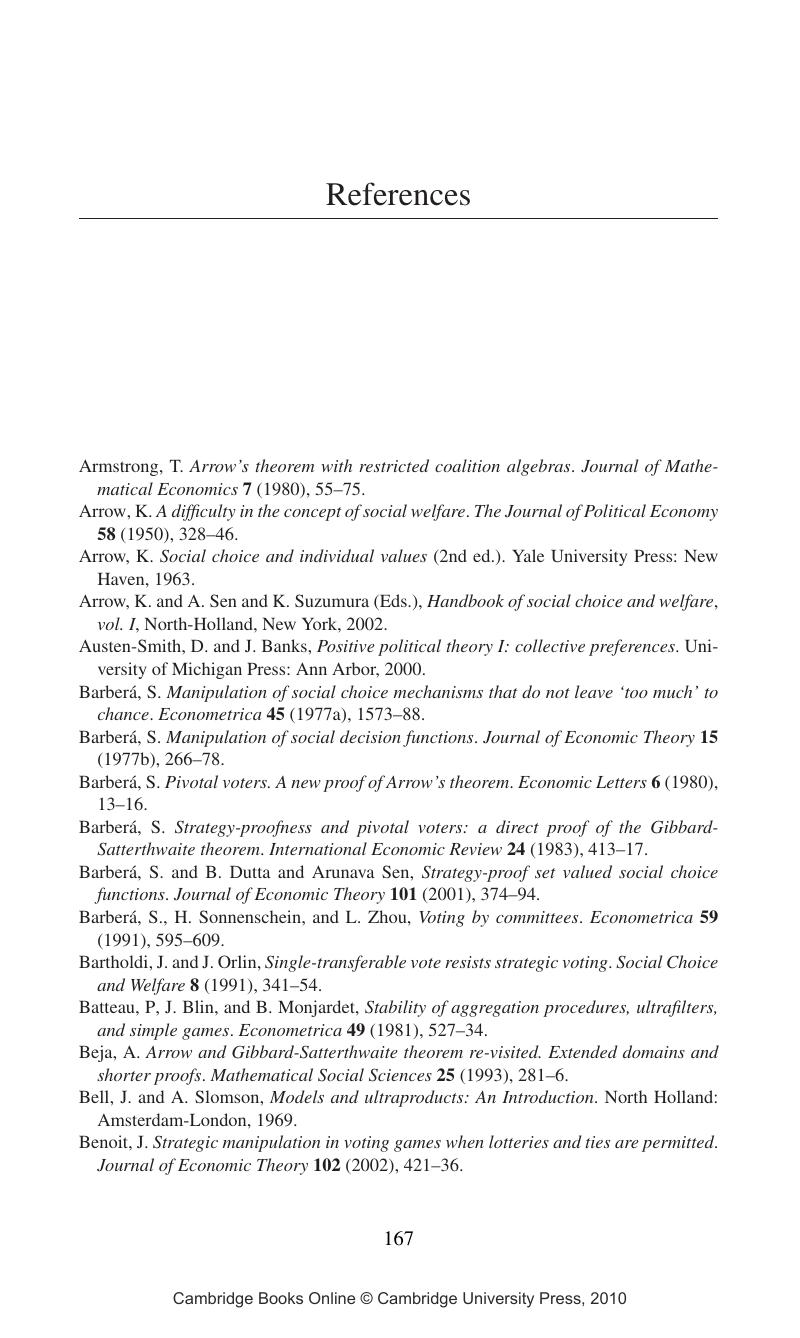Book contents
References
Published online by Cambridge University Press: 07 December 2009
Summary

- Type
- Chapter
- Information
- Social Choice and the Mathematics of Manipulation , pp. 167 - 172Publisher: Cambridge University PressPrint publication year: 2005

